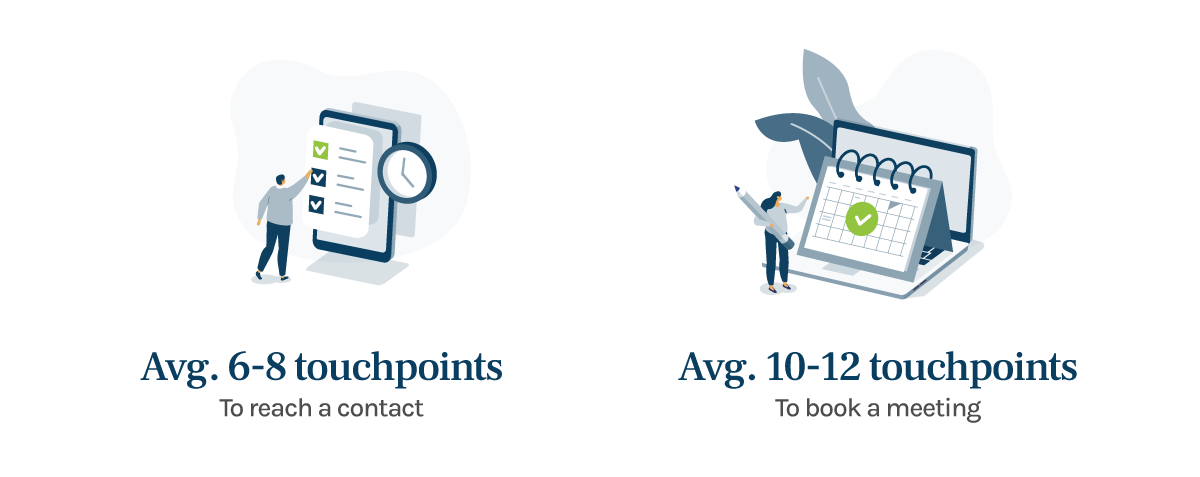What compels you to take a call from a sales rep?
Most executives receive multiple calls and emails every day from sales executives wanting some of their time. That salesperson has just seconds to grab attention. So, what can you do to separate yourself from the pack?
At ML, we use Strategic Outbound Marketing strategies to get the attention of the c-suite and senior executives with carefully crafted messaging (delivered by phone and email) that reflects issues of relevance and includes valuable supporting content that educates or informs the reader.
According to Forbes in its Article “How to Use Content Marketing To Build Trust,” trust is crucial to growing revenue. Therefore, your message and content must create trust, and a great way to do this is by educating your readers with industry insights or doing a deep dive into a specific topic. In other words, if you can help a busy executive meet their corporate mandates, they will want to speak with you.
Building trust is at the heart of everything we do at ML. From a sales performance perspective, you can learn more about that in our blog Building Trust Through Account Based Selling.
“… if you can help a busy executive meet their corporate mandates, they will want to speak with you.
That information should be part of your value proposition and ideal customer profiles. If your messaging reflects what is in those and it is not resonating, you need to re-evaluate. Consider conducting a market research project to better understand the top-of-mind topics to the stakeholders you’ve identified as your key target market.
Lara Triozzi, ML’s CEO, says, “Two things matter when crafting messaging intended to get a prospect’s attention: relevance and timeliness. The more relevant you can be to topics that are top-of-mind to your audience, the more likely they are to pay attention. And more importantly, the more likely they are to see you as a thought leader.”
Strategic Outbound includes doing the groundwork to identify and validate an audience and ensure it is composed of qualified prospects who need your offering.
Strategic Outbound ensures you engage with the correct accounts and individuals to share valuable, relevant, and educational content to build trust.
This is an evolution away from the practice of sending a large volume of emails and making generic cold calls to an unqualified audience in the hope of sparking interest in a product or service.
“Is email marketing dead?” is a question that seems to crop up every year, and the answer is “not if you apply Strategic Outbound Marketing tactics.” Strategic Outbound teaches us that an email must be relevant to the person you target and provide value, like mentioned in the Forbes article.
ML’s Sales Content Manager, Stephen Kirkpatrick, says, “To be enticing while building immediate trust, messaging must be about the problems your offerings resolve for your audience. This is why your ideal client profiles and value propositions are so important. When these are strong, all of the information you require to speak to your audience’s issues and how you resolve them will be at your fingertips.
“I use ideal client profiles and value propositions to create talking points and emails that highlight our clients’ differentiators and convince potential buyers to meet with them. In addition, at ML, we conduct client discovery calls before beginning a project. I use these calls to answer any questions I may have and validate any assumptions I have made.
Stephen continues, “When it comes to sales emails, less is often more. For example, most of the emails our team crafts aim to be 150 words or less with limited page breaks. Given that so many decision-makers consume emails via smartphones, if a message simply looks too long, it can create hesitancy to engage.
“Then, of course, you want to highlight the digital asset you're offering. If the email copy lacks a personable, educational, and problem-solving tone, the chances of your prospect clicking a link significantly shrinks.”
“If the email copy lacks a personable, educational, and problem-solving tone, the chances of your prospect clicking a link significantly shrinks.”
When crafting a subject line, we have found that these three themes generally perform well:
In the spirit of building trust, make sure that the body of the email message and supporting content provide your reader with the material teased in your subject line.
Stephen adds, “We all are on somebody's email list, and we know what type of subject lines resonate with us as professionals. I can almost guarantee that whatever subject lines cause you to react are short and informative.
“A compelling subject line is essential. You may have a relevant message, but that message will be missed without a persuasive subject line. Therefore, we recommend keeping subject lines brief and aligned with your message.
“Other best practices include:
“One of the speakers from Inbound 2021 (HubSpot's annual conference) owns the website Subjectline.com, which is a great source to use for B2C and B2B emails."
Many companies underestimate the importance of phone calls to drive the early stages of their sales program. Calls are an essential component of Strategic Outbound Marketing. Your email outreach will have warmed up your audience, making them more receptive to your call.
Your phone scripts will reinforce the message in your emails. Whether speaking to the executive, their gatekeeper, or even their voicemail, get to the point quickly and re-state your compelling message. Leave your contact information but also always follow up with a personalized email.
In our blog, Build a B2B Prospect List of Qualified Leads Through Personalized Outreach, we discuss the value of having experienced sales professionals make calls, especially if your sales are complex and require engaging senior executives. These skilled team members will converse most effectively with your target audience when they connect.
They also understand that you must reach out by both phone and email numerous times. It’s the rare outreach that is successful on the first attempt (though not impossible!)

Content, as they say, is king. The content you include is essential as it supports your message and provides the promised value. It is a critical component to build trust. If it is off topic, not valuable to the reader, or poorly crafted, it can undermine even the best outreach.
The art of content creation is very complex and something we won’t dive into for the purposes of this blog. However, we recommend you have a strong sales content creation strategy to ensure you have the most effective content available in a variety of formats. A great source of advice is the Content Marketing Institute.
At ML, we do not create content for our campaigns. Instead, we take our clients’ existing content and re-purpose it for sales-oriented messaging. We then provide feedback on its efficacy and help our clients decide where the gaps are in their available content library and which topics are gaining the most traction.
We analyze all of our programs throughout their duration, carefully paying attention to what the data tells us. We then feed that data back to our client, making recommendations for content creation and improvements. Together we determine if pivots to the program are required.
As with every aspect of your sales and marketing programs, it is critical to evaluate the performance of your messaging and content at regular intervals. Stephen says, “Because we are passionate about data, I track how emails are performing in HubSpot and make sure forecasted goals are being met.”
Regular analysis will surface intel concerning what is performing, what isn’t, and content that may need some tweaking. We talk more about this in our blog Data and the Art of the Pivot.
Now that you have a qualified list of target accounts, and have created strong messaging, you can begin your outreach. Next month’s blog will discuss best practices to help you create an engagement program that will get you in front of the right decision makers.
If you have questions about any of the subjects included in this blog, we would welcome the opportunity to speak with you.
Until next time,
Michelle




